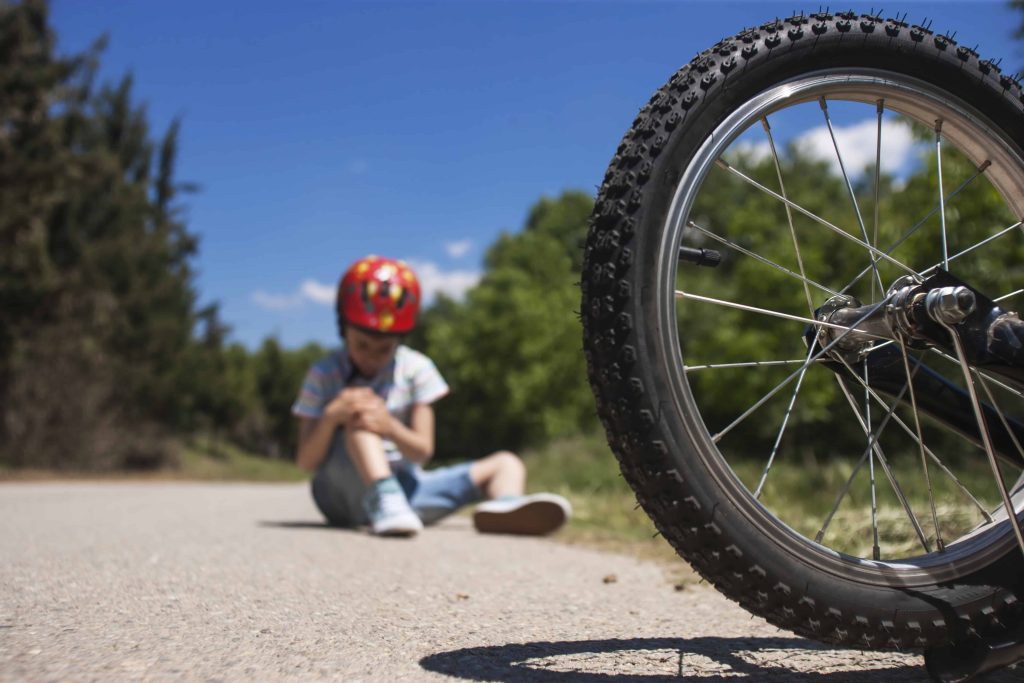
The holiday season is here!! The weather is warm, kids are playing, the bikes, scooters and skates are out…. some might even be learning to ride a bike for the first time. Unless you wrap them in cottonwool, wounds, grazes and scrapes are a part of childhood that can’t be avoided. Instead, it’s best to keep up to date with the best way to manage them.
Over the years the first aid advice for wound care has moved with the times (and research). I have heard lots of things during my first aid courses around wound care…. The most common is “wounds like to dry out” (like my mum used to say). However, the most unusual was definitely “rub an onion on a wound to help it heal!” This is not something that I would advise!
So, let’s take a look at what you should do if your child falls and gets a scrape or a graze….
Firstly, stay calm and stop any bleeding by applying direct pressure over the wound with something that is as clean as possible and won’t stick or leave “bits” in the wound.
Next, take a look at the wound… the things you want to be aware of are:
- The size of the wound
- The location of the wound
- The depth of the wound
- Does it have anything in it? e.g. gravel or dirt
Once you have stopped the bleeding and taken a look at the wound you will need to clean it, cover it and if needed (see below) take your child to a Dr/Nurse for more specialised management.
To clean a graze or wound simply flush it gently with some clean water or saline. DO NOT scrub the wound because you can damage healthy parts of the wound that will help the healing. If a simple flush won’t remove any gravel or dirt then it is best to seek medical help for them to safely clean the wound. A clean wound will heal quicker and has less chance of getting infected.
My Mum used to always say “let the air get to your wound to dry it out.” While that might work for a small, very superficial graze. We now know that most wounds heal best in a warm and moist environment. This means keeping them covered with a non-stick dressing. A dressing will help to keep infection out, support the body’s natural wound healing and protect the delicate healing tissue from further injury (especially on an active child or on a joint that gets bumped a lot). Change the dressing when it looks mucky, if it gets wet (wounds won’t heal if wet) or every couple of days to keep an eye on it.
Most of the time if you follow the above steps you will have a beautifully healed graze/wound in no time. However, there are a few things to watch for that mean it is best to seek medical help. They are:
- If the wound won’t stop bleeding
- If the wound is deep
- If the wound is large
- If there is still “bits” in the wound even after a gentle flush
- If the wound starts to look red, become more painful, starts to have mucky ooze or is slow to heal
- Or if you think it is beyond what you are comfortable managing yourself
A Dr and Nurse are trained to help manage and heal up wounds in these situations and are always happy to give you the right advice.
I hope you have a happy, safe and graze free holiday… but if your child does happen to get a scrape or graze by following the above steps you will have it healed up in no time